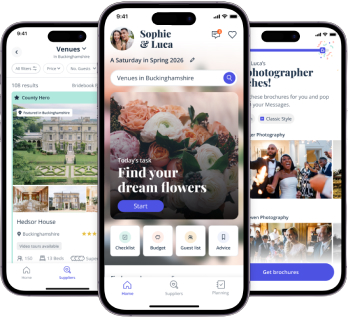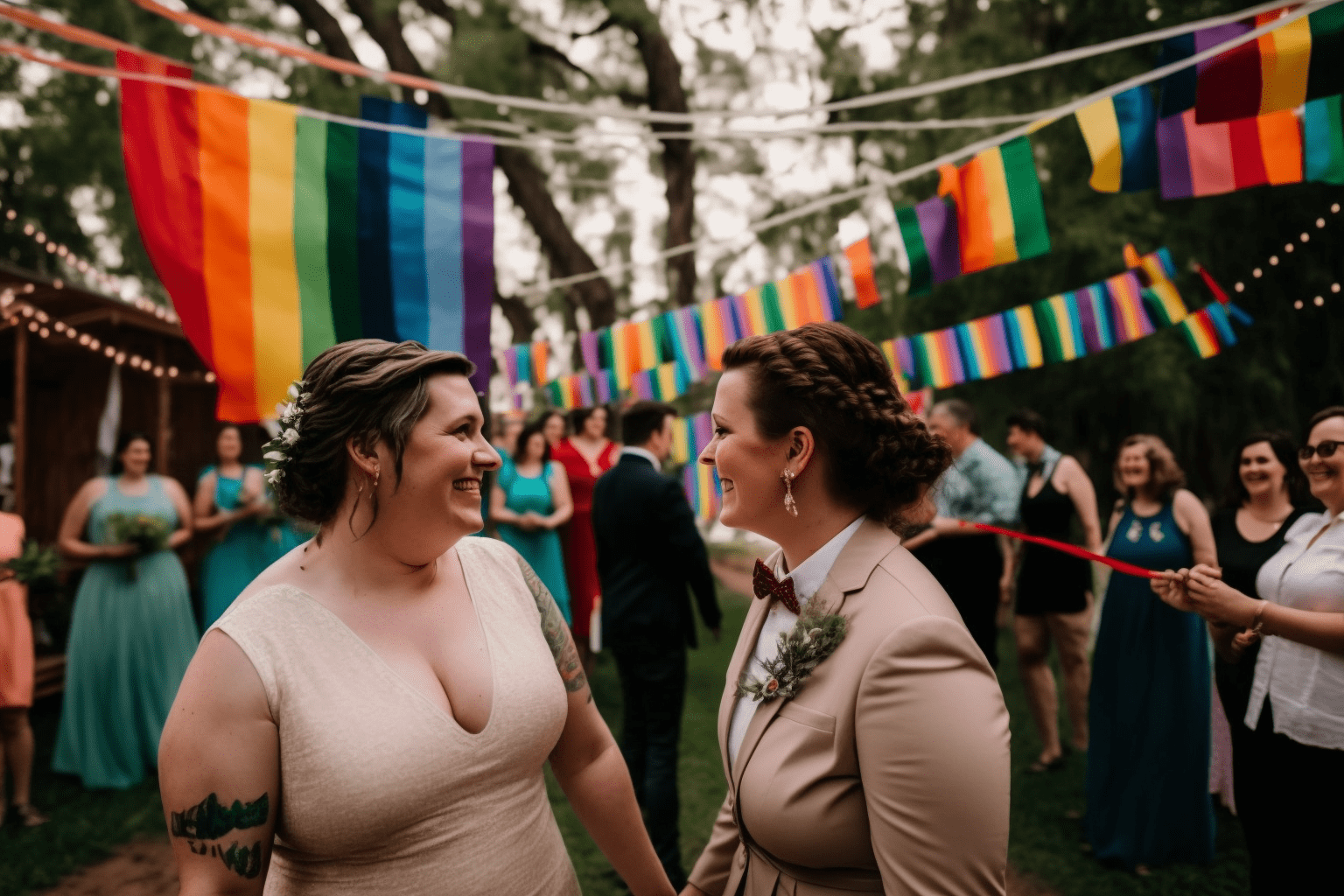
Pride Month is the perfect time to celebrate and acknowledge the contributions and struggles of the LGBTQ+ community. As society becomes more accepting and inclusive, wedding ceremonies are evolving to more accurately reflect the diversity of love and partnerships. An important part of that is using gender-neutral wedding terms to include and celebrate all couples. They’re not just for LGBTQ+ couples and individuals, but a great way to make sure everyone feels respected and comfortable, no matter their gender or pronouns or presentation. Most of the following gender-neutral terms aren’t made-up or new. They’re either derived from other terms, or words you probably already use and are familiar with.
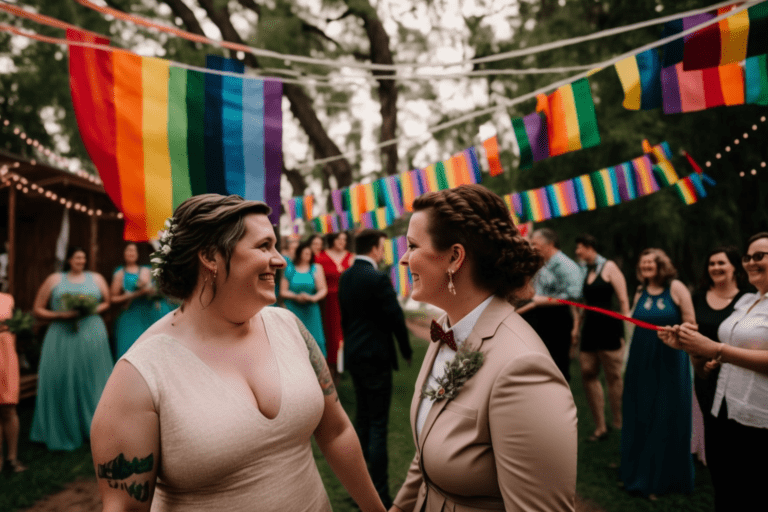
Gender-neutral language: a definition
There’s a lot more diversity than just male and female, bride and groom, husband and wife, Mr and Mrs. Gender-neutral language simply means avoiding using these common binary terms, and using more inclusive options instead, like ‘partner’ or ‘couple’.
Mx
A gender-neutral alternative to the gender-specific titles of ‘Mr’, ‘Miss’, ‘Mrs’ and ‘Ms’, pronounced ‘mix’. This is useful for non-binary and gender-fluid individuals, and also in situations where the gender identity of a person either isn’t specified, or doesn’t need to be specified. It can also be applied to contexts outside of weddings and marriage. After all, gender-inclusive language isn’t limited to relationship talk alone, but can and should be used in all areas of modern life.
Nearlywed/Marrier/To-Be-Wed
All great non-gendered alternatives to ‘bride’ or ‘groom’, to describe those who are engaged and preparing for their wedding day. Use them either in the plural or singular, on everything from save-the-dates to invitations, as well as at engagement parties and pre-wedding photo shoots.
Newlywed(s)
The counterpart to newlyweds, used to describe newly married individuals after the wedding. It’s a widely used and familiar gender-neutral term that can replace ‘wife’ and ‘husband’.
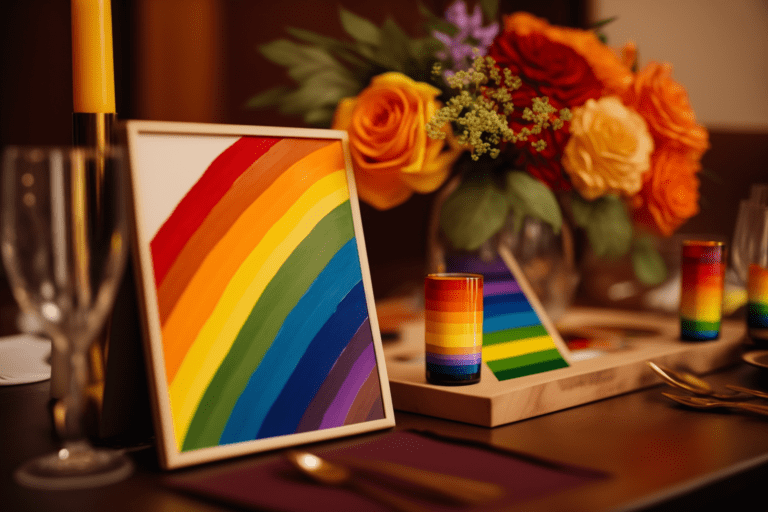
Fiance
A gender-neutral term to describe someone you’re engaged to marry. This spelling removes the gendered association with the traditional spelling of “fiancé” (for a male) and “fiancée” (for a female), and is another great alternative to bride and groom.
Spouse
Spouse is like newlywed, but can refer to married individuals regardless of their gender or the time frame. A popular inclusive term both within and outside of the LGBTQ+ community.
Partner, couple, significant other, other half
These are all great (not to mention familiar) terms for talking about a person or people who are in a relationship without specifying their gender or sexual orientation. They can be used at any stage of a relationship, not just in the context of weddings or marriage. This makes them ideal alternatives not only to ‘bride’ and ‘groom’ or ‘husband’ and ‘wife’, but also to ‘boyfriend’ and ‘girlfriend’.
Partner A & Partner B
A gender-neutral alternative to ‘bride’ and ‘groom’ in situations where a couple needs to put down each of their names (such as on vendor intake forms and contracts).
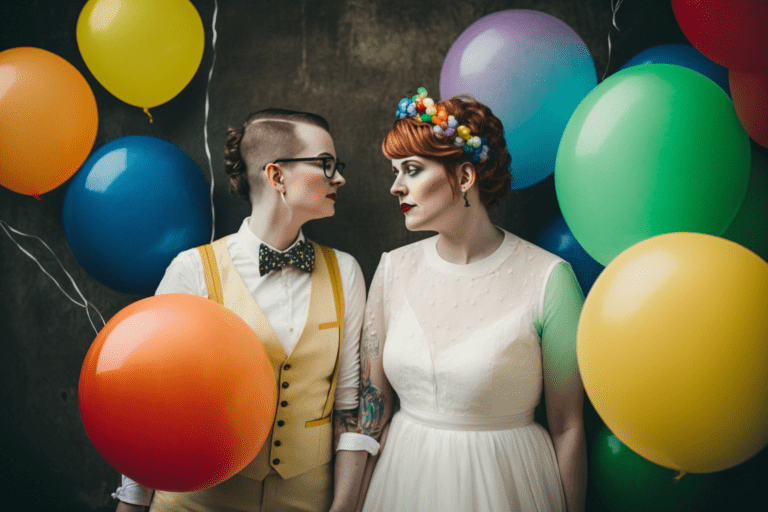
Best Person/Person of Honour
You may have heard the terms ‘Best Woman’ or ‘Man of Honour’ in the context of non-traditional wedding party members. ‘Best Person’ or ‘Person of Honour’ are the gender-neutral alternatives. If you’re the couple, it’s a good idea to talk with your best friends and ask what term they would prefer for their role in your wedding – and to then respect their choice. After all, such important and distinguished members of the wedding party should feel supported and respected.
Wedding Attendants/Wedding Party Members
Non-gendered alternatives to the traditional terms of ‘bridesmaids’ and ‘groomsmen’, as well as the less traditional, but still gendered, ‘bridesmates’ and ‘groomsmaids’. This is both inclusive, and also gives the couple more flexibility and freedom over the choice of their wedding party members. These people are some of the most important in your wedding celebration, so it’s important to make sure they all feel equally represented and respected with the language you use.
Ring Bearer & Flower Child/Flower Person
The traditional ‘ring bearer’ is already naturally gender-neutral. ‘Flower child’ or ‘flower person’ are both inclusive and non-gendered alternatives to the traditionally gendered ‘flower girl’. Both give the couple more freedom over which children to include in their wedding proceedings. They also let the children themselves identify as whichever gender they wish.
Primary Bouquet/Main Bouquet
An inclusive alternative to bridal bouquet, carried by one of the nearlyweds. If both nearylweds are carrying bouquets, use Partner A and Partner B terminology to refer to whose are whose.

Bachelorx
‘Bachelorx’ falls within the same group as ‘bachelor’ and ‘bachelorette’, pronounced ‘bachelor-ex’. It describes a person who is unmarried and has never been married. The suffix ‘x’ eliminates the gendered associations and makes the term more inclusive. Similarly, call any pre-wedding party with wedding attendants a bachelorx or bach party, instead of bachelor or bachelorette party.
Wedding Shower
A non-gendered way of referring to the pre-wedding event where family and friends can shower the couple with presents from their gift list in anticipation of the big day.
Wedding Suite
A non-gendered alternative to the traditional bridal suite. This is the room (or rooms) in the wedding venue where the wedding party can get ready and prepare for the ceremony.
Wedding Outfit/Wedding Gown/Wedding Boutique
A gender-neutral alternative to saying ‘bride’s dress’ or ‘groom’s suit’, to describe the gown or outfit worn on the wedding day by either one of the couple. ‘Wedding boutique’ is similarly a great swap for ‘bridal boutique’, as it removes any gendered associations with wedding outfit shopping.
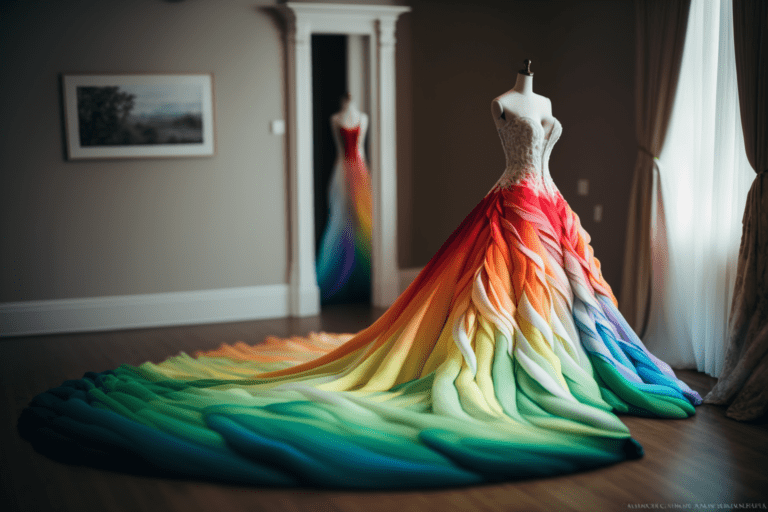
Celebrant
An inclusive and non-gendered term for a person who performs and officiates a wedding ceremony, regardless of their religious, spiritual or secular background.
Head Table/Table #1
A non-gendered, non-patriarchal and apolitical alternative to the King’s Table (the focal-point table where the couple sits with their closest family and wedding party members).
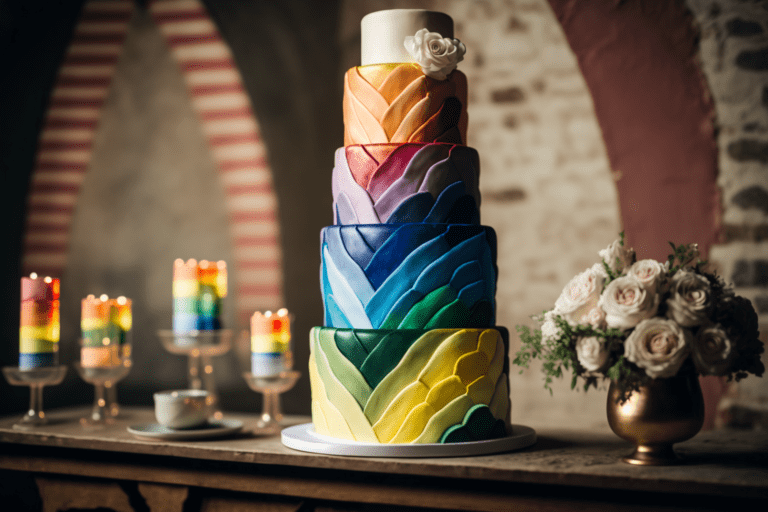
Swap out gendered language for these inclusive alternatives to celebrate and respect all couples and individuals, regardless of their gender or sexuality. It’s a great way to recognise the diversity of love and partnerships around us. Of course, if gendered language feels authentic to the couple or individual, there’s nothing wrong with using it! But in broad descriptions, it’s important not to make generalisations and assumptions which might exclude members of the LGBTQ+ community.
You Might Also Like…
Happy Planning!

